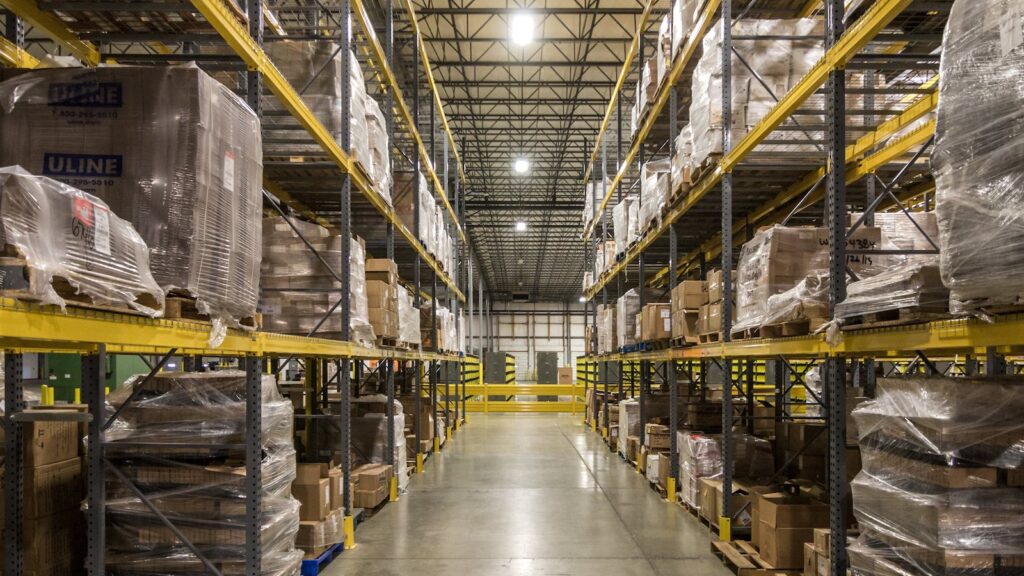Navigating the complex web of customs regulations can be a sticky situation for businesses aiming to streamline operations while maintaining compliance.
One integral component of this landscape is the customs bonded warehouse—a strategic asset that offers a plethora of benefits for companies engaged in global commerce.
In this comprehensive guide, we’ll explore the world of customs bonded warehouses – their advantages, procedures, and best practices to help you optimize your businesses’ efficiency and minimize risks.

Understanding Customs Bonded Warehouses
A customs bonded warehouse is a secure facility authorized by customs authorities where imported goods can be stored, manipulated, or undergo manufacturing processes without immediate payment of customs duties and taxes.
These warehouses play an important role in international trade by providing businesses with flexibility in managing their inventory and cash flow while ensuring compliance with customs regulations.
Benefits of Utilizing Customs Bonded Warehouses
Let’s take a moment to revisit why customs bonded warehouses offer significant advantages for numerous companies.
- Duty Deferral: deferred payment of customs duties and taxes until the goods are removed from the facility for consumption or export allows businesses to conserve cash flow and allocate resources more effectively, particularly in situations where imported goods may remain in storage for an extended period before being sold or distributed.
- Improved Cash Flow Management: businesses can optimize their cash flow and allocate funds to other critical areas of operation – this flexibility is especially valuable for companies with seasonal fluctuations in demand or those involved in industries with long lead times between procurement and sale of goods.
- Streamlined Customs Procedures: goods stored within these facilities are considered in customs custody but not yet within customs territory – this can expedite the clearance process for imported goods, reducing the risk of delays and potential disruptions.
- Inventory Management Flexibility: with the ability to store goods for an extended period without immediate customs clearance, companies can strategically manage stock levels, minimize holding costs, and respond more efficiently to fluctuations in demand.
- Facilitated Trade Operations: a centralized hub for various trade-related activities, including sorting, labeling, packaging, and value-added services enhances efficiency in supply chain management and supports just-in-time inventory practices.
Procedures for Operating a Customs Bonded Warehouse
From obtaining approval from customs authorities to implementing stringent security measures, don’t miss these key steps involved in establishing and managing a customs bonded warehouse:
- Obtaining Approval from Customs Authorities
Before establishing a customs bonded warehouse, businesses must obtain approval from the relevant customs authorities in the jurisdiction where the facility will be located. This process typically involves submitting an application detailing the intended operations, security measures, and compliance procedures.
- Implementing Robust Security Measures
Security is paramount when operating a customs bonded warehouse to prevent unauthorized access, theft, or tampering with goods. Implementing robust security measures, such as surveillance cameras, access control systems, and perimeter fencing, is essential to safeguarding the integrity of the facility and complying with regulatory requirements.
- Maintaining Accurate Record-Keeping
Businesses operating customs bonded warehouses must maintain detailed records of all incoming and outgoing goods, including descriptions, quantities, values, and relevant customs documentation.
- Complying with Customs Regulations
Adherence to customs regulations is non-negotiable and businesses must ensure compliance with import and export regulations, tariff classifications, valuation requirements, and any other applicable customs laws to avoid penalties, fines, or revocation of warehouse privileges.
- Conducting Regular Audits and Inspections
Conduct internal audits and cooperate with customs authorities during scheduled inspections to identify any discrepancies, address issues promptly, and maintain the integrity of the warehouse operations.
5 Best Practices for Maximizing Efficiency and Compliance
Implementing the following best practices will help optimize operations and ensure compliance in your customs bonded warehouse. With a strategic approach, you’ll be well on your way to driving sustainable growth in your business.
- Optimize Inventory Management Systems
Implementing robust inventory management systems can enhance visibility, traceability, and accuracy in warehouse operations. Leveraging technology solutions such as barcode scanning, RFID tracking, and inventory management software can streamline processes, minimize errors, and improve overall efficiency.
- Foster Collaboration with Customs Authorities
Building strong relationships and open communication channels with customs authorities is crucial for ensuring compliance and addressing any regulatory concerns proactively. Collaboration with customs officials can facilitate smoother clearance procedures, expedite approvals, and mitigate potential compliance risks.
- Invest in Training and Education
Providing comprehensive training and education to warehouse staff on customs regulations, compliance procedures, and security protocols can empower employees to perform their duties effectively and uphold compliance standards.
- Continuously Monitor and Adapt to Regulatory Changes
The regulatory landscape governing international trade is constantly evolving, with changes in customs regulations, trade policies, and security requirements. Businesses must stay vigilant and proactively monitor regulatory updates to ensure ongoing compliance and adapt their processes accordingly.
- Conduct Regular Risk Assessments
By evaluating internal controls, security protocols, and procedural safeguards, companies can implement targeted risk mitigation strategies and identify potential vulnerabilities, security threats, and compliance risks within their warehouse operations.
Simple Strategy, Big Rewards
Customs bonded warehouses offer businesses a strategic advantage in navigating the complexities of international trade while balancing the need for efficiency and compliance.
By adhering to best practices, maintaining robust security measures, and fostering collaboration with customs authorities, businesses can maximize efficiency, mitigate risks, and achieve sustainable growth in the ever-changing world of international trade.
A little foresight can go a long way. With a simple plan in place, businesses can position themselves for long-term success in the global marketplace. Customs bonded warehouses are more than just storage facilities—they are strategic assets driving competitiveness, resilience, and profitability.
As the saying goes, “simplicity is the ultimate sophistication,” and by embracing this principle, businesses can thrive amidst complexity and uncertainty.
Contact East Coast Warehouse & Distribution today to take advantage of one of their many customs bonded warehouse facilities at sales@eastcoastwarehouse.com
